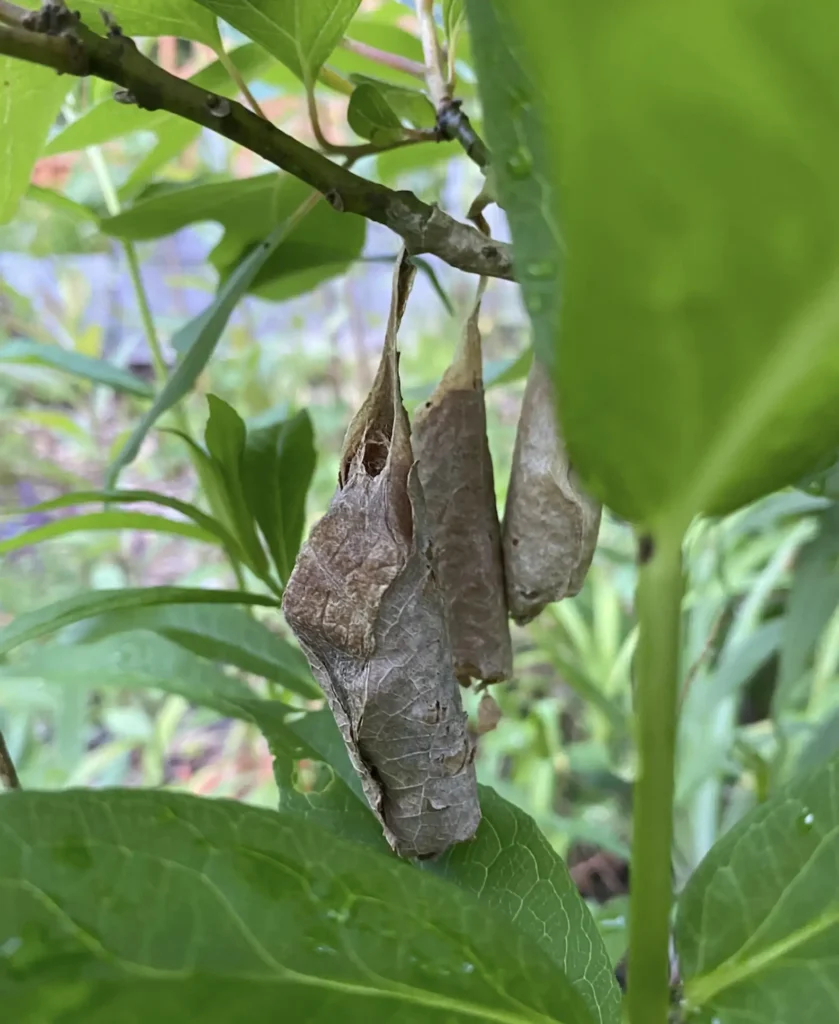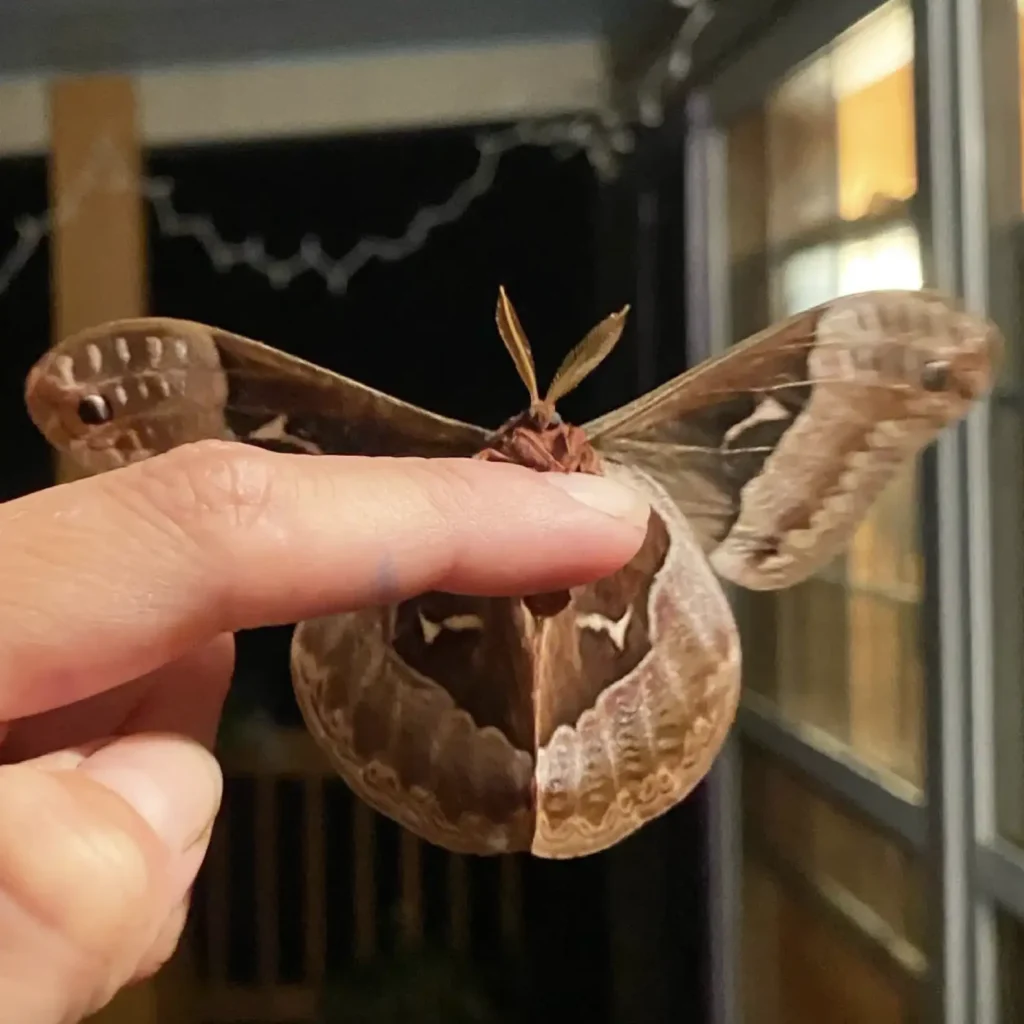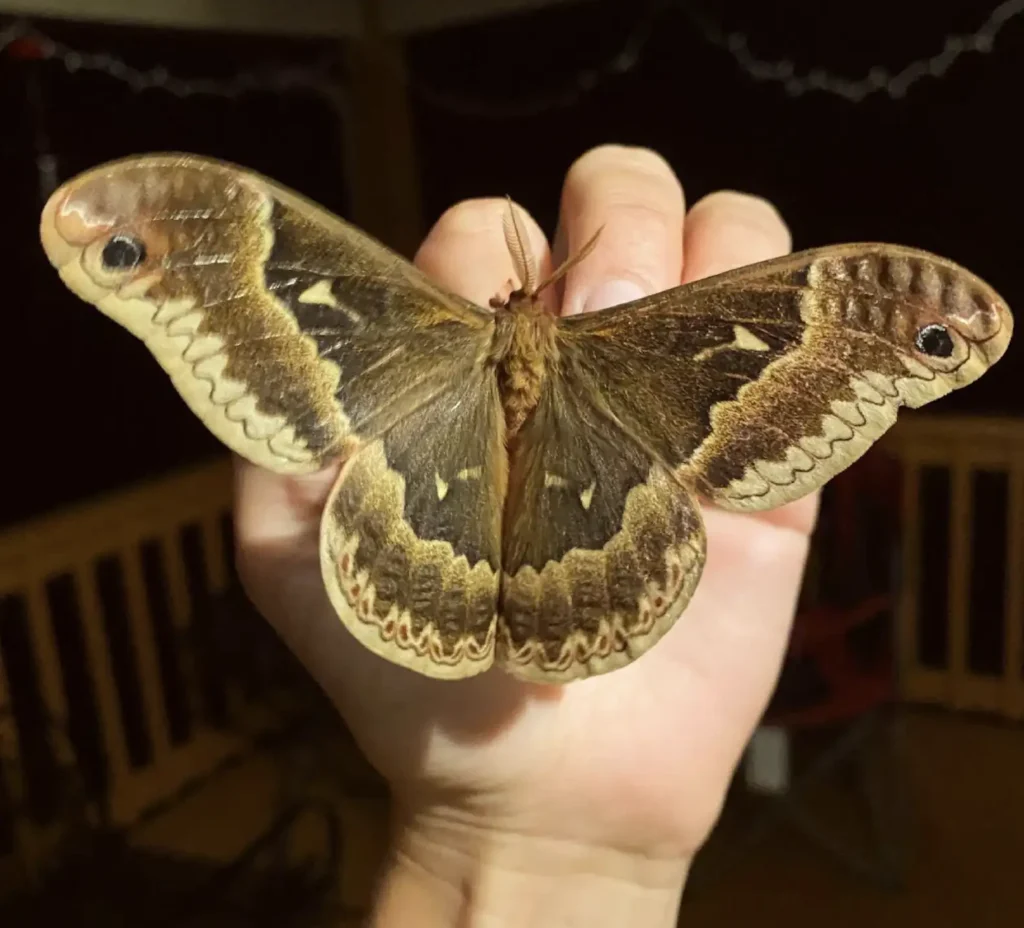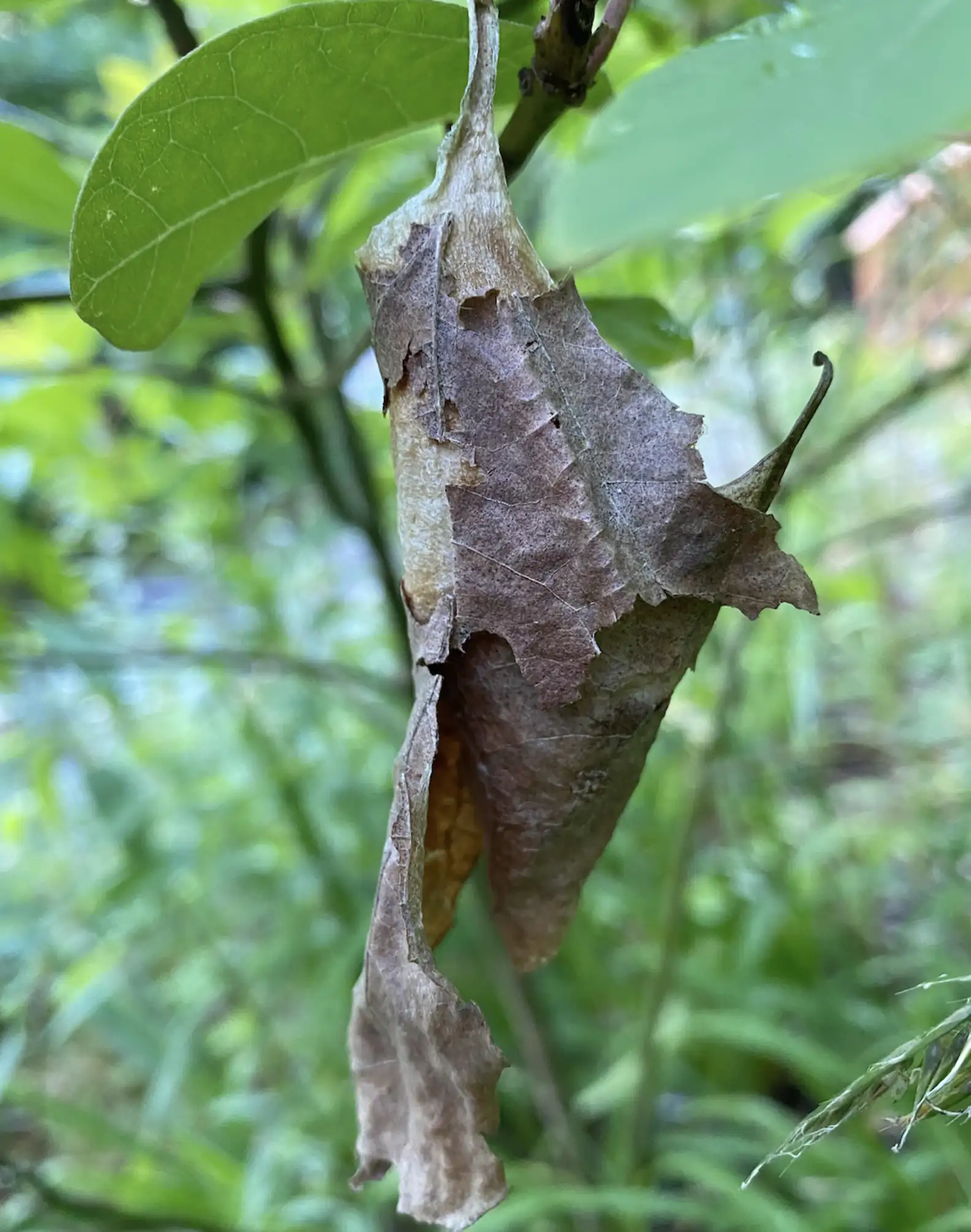Not everything is what it seems …
Fallen leaves might seem like debris, but they are teeming with life and potential for supporting biodiversity. Among the crisp, dead foliage in your yard, there might be a cleverly disguised cocoon of the tuliptree silk moth, a giant, palm-sized moth that begins its life as a caterpillar with vibrant green and red hues. These moths spin their cocoons inside curled leaves, blending seamlessly with leaf litter to avoid predators during the winter. However, this disguise can also make them easy targets for well-intentioned cleanup efforts.
Mary Rutkowski, a nature enthusiast, discovered this firsthand while observing her sassafras tree. Instead of discarding the dead leaves, she recognized their hidden purpose as safe havens for overwintering moths. This discovery highlights the importance of preserving leaf litter, especially for native species like the tuliptree silk moth, whose populations could suffer if their habitats are removed prematurely.

Beyond the direct impact on wildlife, fallen leaves also serve as natural mulch, enriching the soil with nutrients as they decay. Leaving them undisturbed benefits earthworms and insects, contributing to healthier ecosystems. Conversely, a significant portion of yard waste that is bagged and discarded ends up in landfills, where it contributes to greenhouse gas emissions rather than decomposing naturally.

If you’re in eastern North America, where tuliptree silk moths and similar species thrive, reconsider your yard cleanup routine this year.

By allowing leaves to stay on the ground through winter, you can play a small but significant role in protecting these fascinating creatures while also benefiting the environment. Sometimes, the best action for your yard is inaction.
